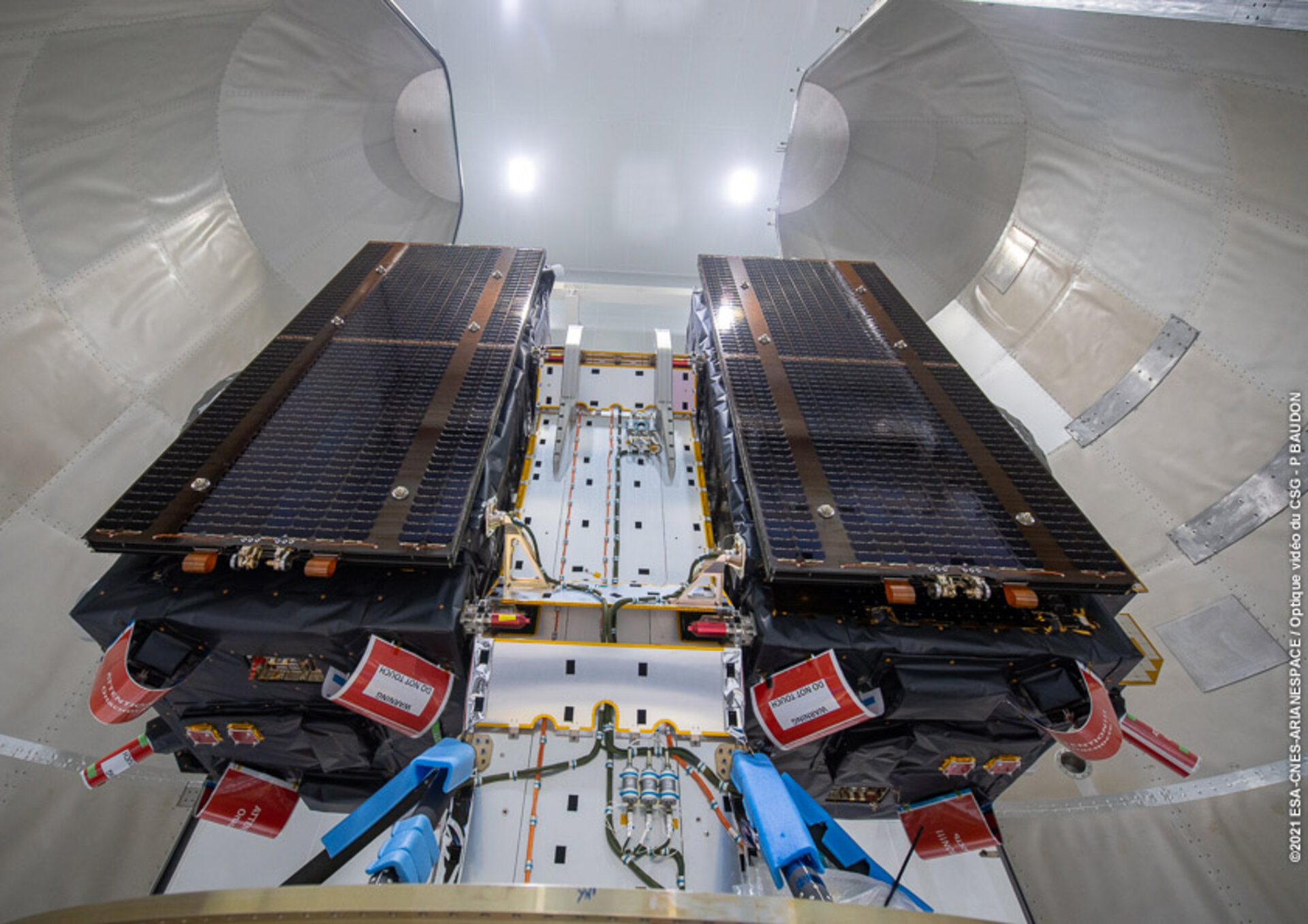Galileo satellites in place for launch
Europe’s next two Galileo satellites have been attached to the dispenser on which they will ride to orbit, and the launcher fairing that will protect them during the first part of the ascent to orbit has been closed around the pair.
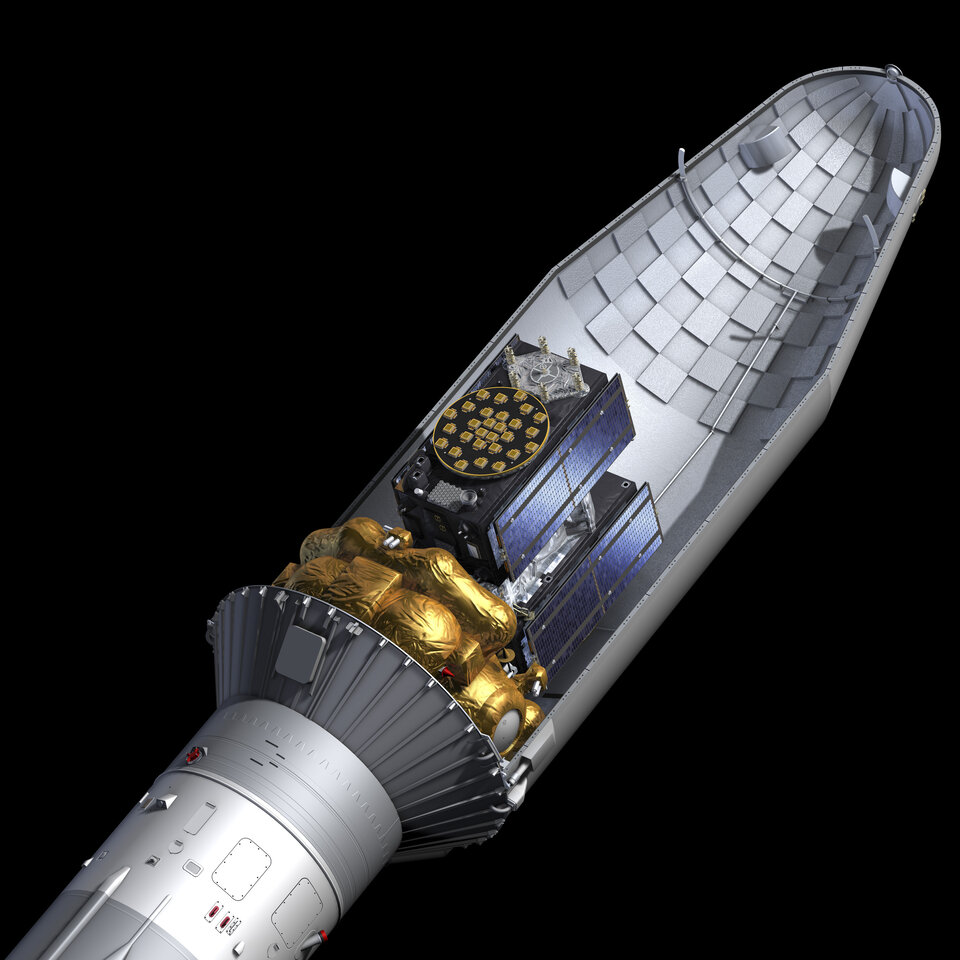
Galileo satellites 27 – 28 are scheduled to be launched by Soyuz launcher from Europe’s Spaceport in French Guiana on 2 December at 01:31 CET (1 December at 21:31:27 local Kourou time).
Their dispenser has the double duty of securing the two satellites safely in place during the lift off and flight, then deploying the satellites into their target orbit.
The combined satellites plus dispenser were then placed onto their Soyuz Fregat upper stage, which has the job of hauling the pair most of the way up to medium Earth-orbit, before being enclosed in their launch fairing.
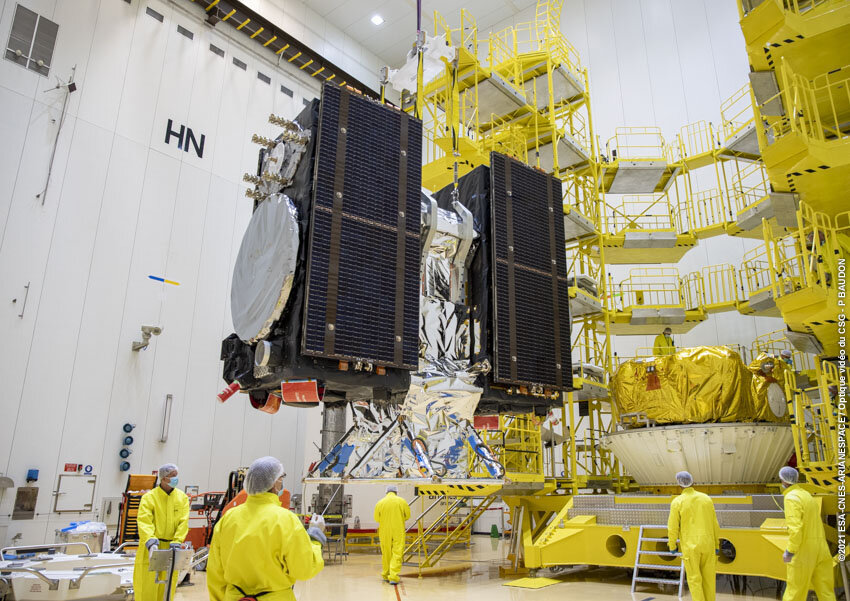
The next step will see this combined ‘upper composite’ being taken to the launch site for integration with the other three stages of their Soyuz launcher, after the launcher is installed on the launch pad.
Bastiaan Willemse, ESA Galileo Full Operational Capability Satellites Manager comments from Europe’s spaceport in Kourou, French Guiana: “So far, everything has been going according to plan and we are heading towards the ending of a smooth launch campaign, which started in early October.”
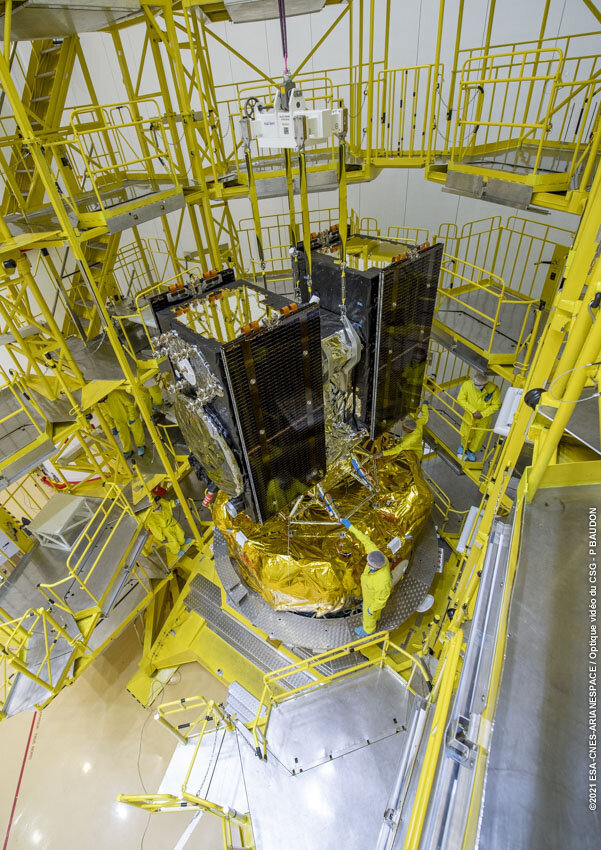
These first of a total of 12, Galileo ‘Batch-3’ satellites, manufactured by OHB Systems and their suppliers from all across Europe.
The pair arrived from ESA’s ESTEC Test Centre to the integration facility in French Guiana in early October, kicking off a busy launch campaign, including initial dispenser ‘fit checks’, filling with the hydrazine fuel that will be used to manoeuvre them during their 12 years of working life and finalisation of their navigation system generation units and uploading of security keys.
These satellites will add to the 26-satellite Galileo constellation already in orbit and delivering Initial Services around the globe.
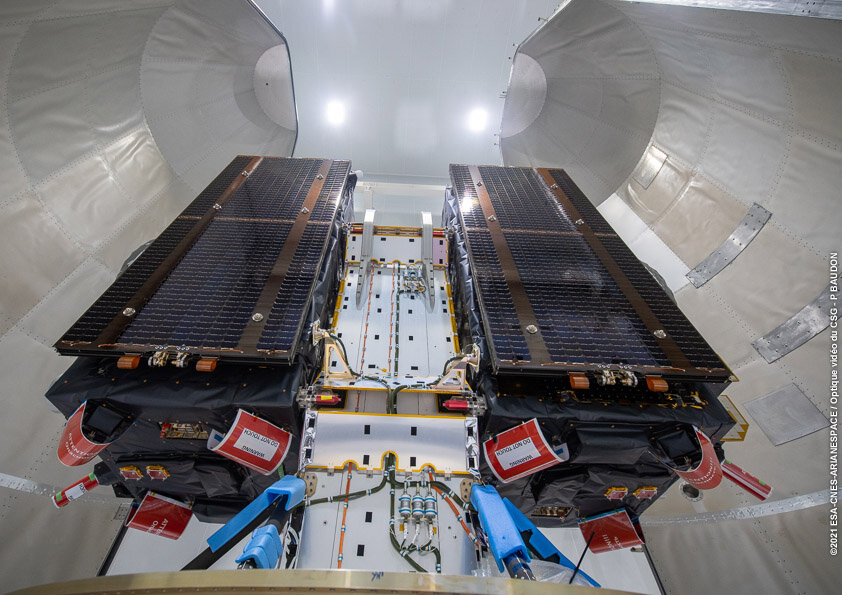
Next week’s lift-off will be the 11th Galileo launch in 10 years. Two further launches are planned for next year, to allow Galileo to reach Full Operational Capability in its delivery of services, to be followed by the launches of the rest of the Batch 3 satellites which are currently all undergoing pre-flight testing.
In parallel to Batch-3’s completion of Galileo First Generation deployment, the new Galileo Second Generation satellites, featuring enhanced navigation signals and capabilities, are already in development with their deployment expected to begin by the end of 2024.
About Galileo
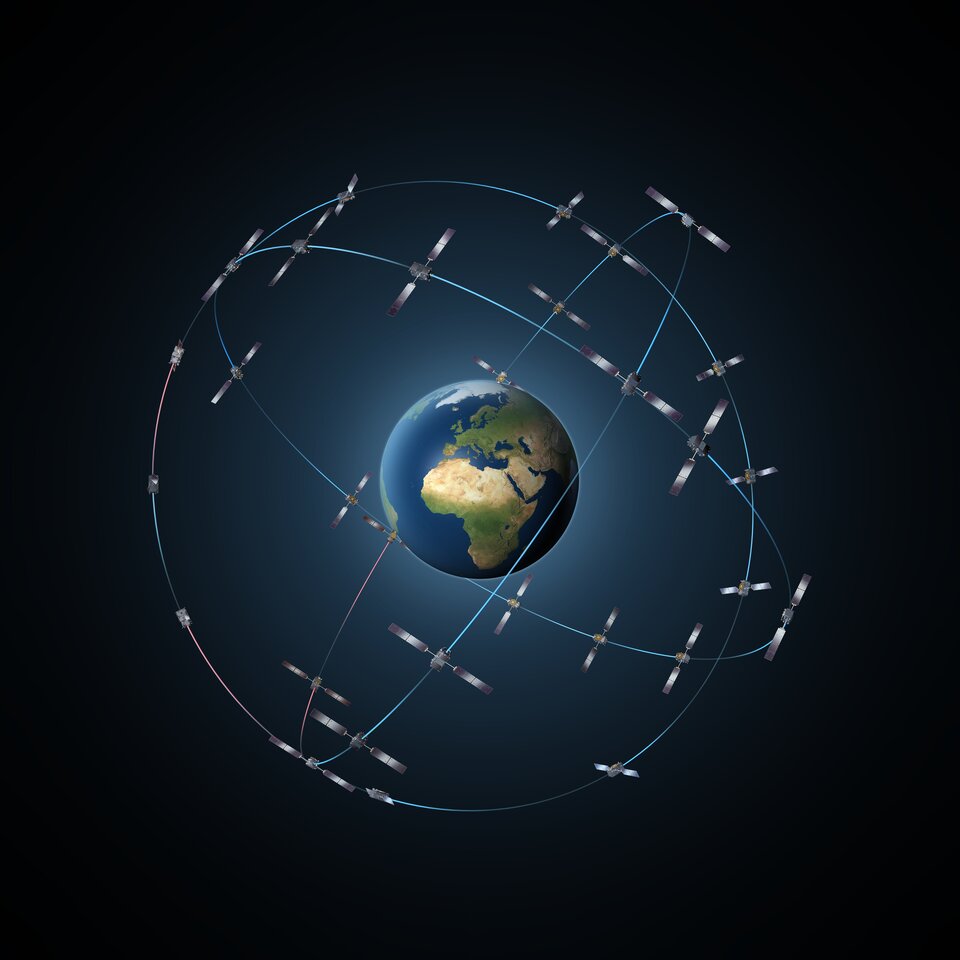
Galileo is currently the world’s most precise satellite navigation system, serving more than two billion users around the globe.
The Galileo programme is managed and funded by the European Union. The European Commission, ESA and EUSPA (the EU Agency for the Space Programme) have signed an agreement by which ESA acts as design authority and system development prime on behalf of the Commission and EUSPA as the exploitation and operation manager of Galileo/EGNOS. “Galileo” is registered as a trademark in the database of the European Union Intellectual Property Office (n° 002742237).

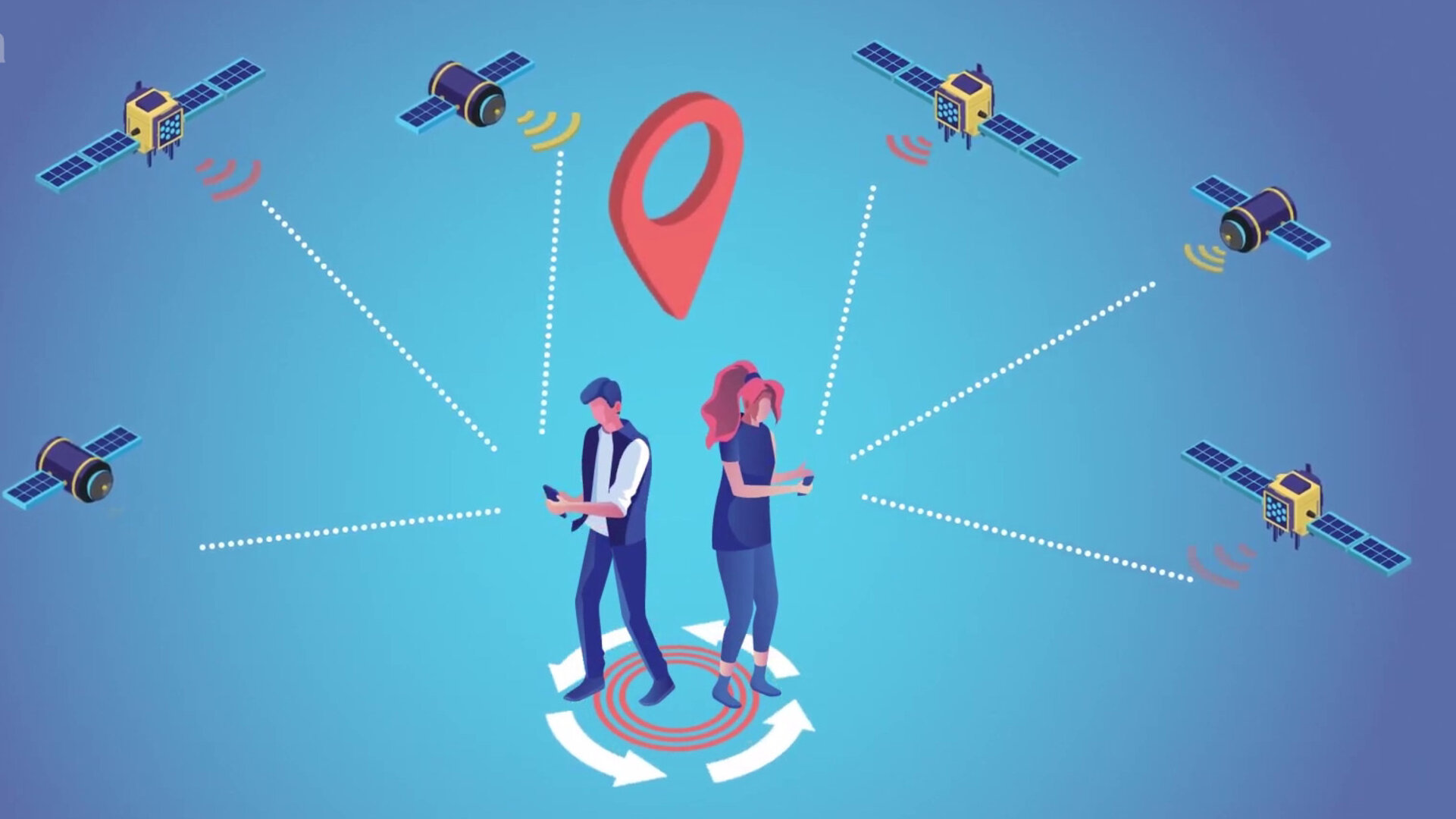
Access the video


